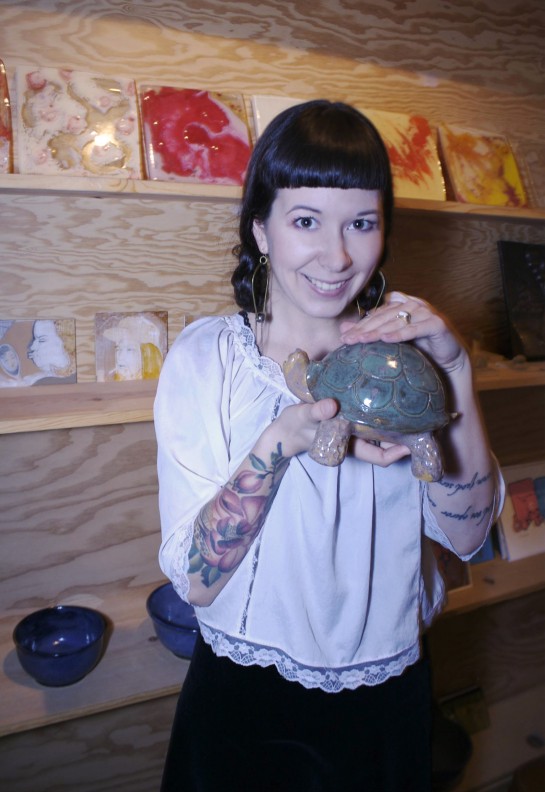Once upon a time, there were two twin brothers named Romulus and Remus. They were the product of a lusty affair between the high priestess Rhea Silvia and the war-god Mars. Once born, the twins were flung into the Italian wildlands by Rhea Silvia’s power-hungry husband, Amulius, who feared imminent overthrow by his wife’s half-god love-children. In a strange twist of fate, the infants were discovered by a she-wolf, and instead of acting on her predatory disposition, she felt moved by motherly instincts and carried them back to her lupercal, or “wolf cave”, where she suckled them into immense adolescent strength. So strong, in fact, that upon reaching adulthood, they returned to their birthplace, hastily dispatched of Amulius, and immediately set to work laying structural plans for a city. The brothers disagreed on the location of their new empire, leading to a tremendous fraternal quarrel that landed Remus in the grave and Romulus in the seat of power. Hence where we get the city’s name – Rome. Or so the story goes….
 Lupercalia is an ancient Roman festival celebrated on the 13-15th of February, with the biggest day of celebrations being on the 15th (which, by they way, is where Ides of March comes from – in Shakespeare’s Julius Caesar, Brutus slays Caesar one month to the day after the Lupercalia festivities. et tu, Brute?….) The name Lupercalia stems from “lupus” – which is Latin for “wolf” – and is a direct nod to the legend of Romulus and Remus and the she-wolf. As with any worthwhile Roman festival, the traditional celebration included a glut of nudity and animal sacrifice.
Lupercalia is an ancient Roman festival celebrated on the 13-15th of February, with the biggest day of celebrations being on the 15th (which, by they way, is where Ides of March comes from – in Shakespeare’s Julius Caesar, Brutus slays Caesar one month to the day after the Lupercalia festivities. et tu, Brute?….) The name Lupercalia stems from “lupus” – which is Latin for “wolf” – and is a direct nod to the legend of Romulus and Remus and the she-wolf. As with any worthwhile Roman festival, the traditional celebration included a glut of nudity and animal sacrifice.
In ancient Rome, March marked the start of the new year, and so February was seen as the month for cleansing and starting anew. The three days of Lupercalia represented a time to cleanse one’s home, but more importantly, it was a time to celebrate and encourage fertility. Young men, called the “luperci”, would run naked through the streets with goatskin thongs just cut from their freshly sacrificed goat, and they would whip the women who lined up along the streets, baring their backs and thighs to the luperci. The goat has long been considered a symbol of sexuality and virility, so receiving a lashing from the skin of a freshly sacrificed goat was thought to invigorate a woman’s fertility.
 As is the case with most of the holidays we so readily celebrate without question of origin or intention, Lupercalia is the predecessor of Valentine’s Day. Before all those hearts and flowers and obligatory declarations of love turned us into Hallmark saps, we used to strip newly sacrificed goats of their skin and whip each other for the sake of fertility and the pursuit of a fresh start. Take your pick…….
As is the case with most of the holidays we so readily celebrate without question of origin or intention, Lupercalia is the predecessor of Valentine’s Day. Before all those hearts and flowers and obligatory declarations of love turned us into Hallmark saps, we used to strip newly sacrificed goats of their skin and whip each other for the sake of fertility and the pursuit of a fresh start. Take your pick…….
 In honor of Lupercalia, I dressed this week in an outfit I thought befitting of a she-wolf: vintage ‘70’s Grey wool jacket by The Villager; jet-black cropped velvet riding pants by some unfortunately named company called Organically Grown; feminine yet minimalistic ruffled black top by Old Navy; splendid silk scarf in muted reds, blues, and golds with a Roman Greco style pattern by Oscar de la Renta; and some seriously spiked heels by Lovely People.
In honor of Lupercalia, I dressed this week in an outfit I thought befitting of a she-wolf: vintage ‘70’s Grey wool jacket by The Villager; jet-black cropped velvet riding pants by some unfortunately named company called Organically Grown; feminine yet minimalistic ruffled black top by Old Navy; splendid silk scarf in muted reds, blues, and golds with a Roman Greco style pattern by Oscar de la Renta; and some seriously spiked heels by Lovely People.
 I felt this theme deserved jewelry worthy of wearing in honor of such an important festival as Lupercalia, so I chose a Victorian era choker made of silver, crystal, and pearls, which once belonged to my great-grandmother; rhinestone stud earrings that once belonged to my manfriend’s great-grandmother; an Afghanistan silver cuff bracelet, which I borrowed from Bethany Walter of Armor Bijoux; and a silver and tourmalated quartz ring given to me by an old friend.
I felt this theme deserved jewelry worthy of wearing in honor of such an important festival as Lupercalia, so I chose a Victorian era choker made of silver, crystal, and pearls, which once belonged to my great-grandmother; rhinestone stud earrings that once belonged to my manfriend’s great-grandmother; an Afghanistan silver cuff bracelet, which I borrowed from Bethany Walter of Armor Bijoux; and a silver and tourmalated quartz ring given to me by an old friend.
 It’s worth noting that I would never have thought to look up the history of Lupercalia if it were not for the breathtakingly talented band, Munly & the Lupercalians. This group is a project from Jay Munly, and they’re in the midst of creating a series of albums chronicling the “original” story of Peter and the Wolf. Album #1 is complete, and well worth listening to. If you’ve read my December blog titled “The day I met Munly….” you know that I would say anything Munly creates is worth listening to, but in the spirit of Lupercalia, I implore you – take a moment to experience his music, and be sure to lash your loved one with a little goatskin today.
It’s worth noting that I would never have thought to look up the history of Lupercalia if it were not for the breathtakingly talented band, Munly & the Lupercalians. This group is a project from Jay Munly, and they’re in the midst of creating a series of albums chronicling the “original” story of Peter and the Wolf. Album #1 is complete, and well worth listening to. If you’ve read my December blog titled “The day I met Munly….” you know that I would say anything Munly creates is worth listening to, but in the spirit of Lupercalia, I implore you – take a moment to experience his music, and be sure to lash your loved one with a little goatskin today.
Thanks to Bethany and Kelly for another amazing day of frivolity in fashion and photos, and to Kelly Mollere at Tanzanite Salon for being a wizard with them hair cuttin sheers!
Comments














